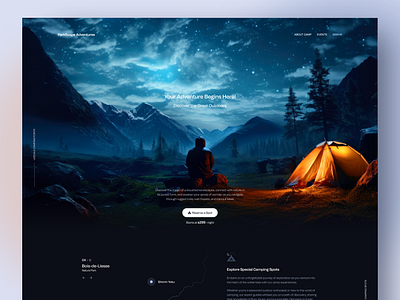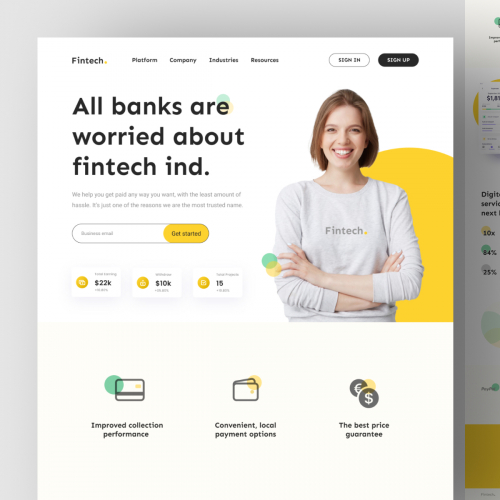Website Design for Small Businesses: Affordable Solutions for Success
Website Design for Small Businesses: Affordable Solutions for Success
Blog Article
Modern Website Style That Captures Attention and Converts
In an increasingly electronic landscape, modern internet site layout has emerged as a critical element in catching user interest and driving conversions. As we explore these important parts, it ends up being clear that comprehending their interplay can substantially influence an internet site's performance and individual complete satisfaction.
Significance of Visual Power Structure
Visual pecking order is a vital aspect in internet site style, as it guides customers' interest and enhances their general experience. By purposefully organizing web content, developers can guide individuals to the most important information initially, thus boosting involvement and enhancing functionality. Effective aesthetic pecking order employs different techniques, consisting of size, spacing, comparison, and color. Larger aspects naturally attract the eye, while contrasting shades can stress essential messages, making them stick out amongst more suppressed components.
Including a rational circulation in content arrangement is important; for example, putting one of the most critical information on top of a page promotes immediate recognition. Moreover, regular use of typography, such as differing font dimensions and designs, helps develop a clear content framework. This company not only help in navigating but additionally builds count on, as customers feel more comfy when they can conveniently find what they are looking for.
Eventually, a well-executed visual pecking order not only boosts aesthetic allure yet likewise substantially affects customer actions. By focusing on essential aspects and making sure a seamless experience, developers can efficiently transform site visitors into customers, reinforcing the relevance of this foundational layout concept in modern site growth.
Responsive Layout for All Tools
Creating a smooth experience throughout various gadgets is necessary in today's digital landscape, where users access web sites from desktops, tablet computers, and mobile phones alike. Responsive layout is a vital technique that makes certain sites adjust fluidly to various display alignments, dimensions, and resolutions. By employing adaptable grids, pictures, and CSS media inquiries, developers can produce formats that maintain visual honesty and functionality, despite the device being made use of.
The value of receptive layout prolongs beyond aesthetic appeals; it straight influences customer involvement and conversion rates. A site that operates well on all devices urges longer check outs and minimizes bounce prices, as users are a lot more most likely to engage with material that is very easy to browse. Moreover, internet search engine, particularly Google, focus on mobile-friendly sites in their rankings, making responsive design an important part of seo (SEO)
Incorporating responsive style not only improves user experience but additionally enhances the development process. By developing a solitary site that works throughout devices, services can conserve time and sources compared to establishing separate mobile and desktop computer versions. Eventually, receptive style is an essential method for modern-day website design, making certain ease of access and satisfaction for all individuals, regardless of their tool.
Engaging Interactive Components
While a receptive style prepares for a useful web site, integrating interesting interactive components is critical for catching customer focus and fostering much deeper connections. Website Design. Interactive aspects, such as animations, tests, and clickable infographics, produce a much more dynamic user experience, urging site visitors to spend even more time on the website
Including interactive functions can likewise guide users through facility info, making it much easier to absorb web content. As an example, interactive sliders can show product variants, while ingrained videos can provide demonstrations or testimonies that reverberate even more than fixed photos or text. Moreover, gamification techniques, like benefits for finishing jobs or engaging with material, can enhance customer motivation and retention.
Efficient pop over to this web-site use interactive components not only enriches the individual experience however can also bring about greater conversion prices. By making communications useful and delightful, services can cultivate a feeling of loyalty and trust with their audience. Nevertheless, it is vital to balance interactivity with efficiency; excessively complicated functions might impede site rate, negatively influencing user complete satisfaction. Inevitably, incorporating properly designed interactive elements can dramatically boost a site's efficiency, driving interaction and conversions in today's competitive digital landscape.
Structured Navigation Practices
Efficient navigation is a cornerstone of any type of effective website, as it directly affects user experience and web content ease of access. Streamlined navigating techniques make sure that customers can easily locate details, improving their communication with the website. A well-structured navigation menu ought to be easy and intuitive, commonly featuring a limited variety of key classifications to prevent frustrating site visitors.
To attain streamlined navigation, designers must focus on a hierarchical structure that practically arranges material. Applying breadcrumb routes can offer individuals with context regarding their current location within the site, permitting seamless backtracking. Furthermore, utilizing drop-down food selections can properly conserve room while still offering access to subcategories.
Receptive design is vital, from this source as navigating should be useful across all devices (Website Design). Mobile users, particularly, take advantage of touch-friendly food selections and retractable sections that keep functionality without compromising aesthetics

Effective Call-to-Action Strategies
A well-crafted call-to-action (CTA) is crucial for leading individuals towards desired end results on a website, as it encourages them to look at here engage with web content or buy. To maximize their effectiveness, CTAs ought to be clear, compelling, and tactically positioned throughout the website.
First, utilize action-oriented language that interacts urgency or worth, such as "Begin," "Join Currently," or "Insurance claim Your Discount rate." This language not only encourages customers yet additionally establishes clear assumptions concerning the following steps.
2nd, think about layout components; CTAs should stand apart aesthetically through contrasting colors, sufficient whitespace, and noticeable positioning. A button that is very easy to see and click boosts the probability of user communication.
In addition, personalizing CTAs based on user behavior or demographics can considerably improve engagement. Tailored messages reverberate more with customers, driving higher conversion rates.

Verdict
These components jointly enhance user experience, making sure that visitors remain engaged and encouraged to discover content further. By prioritizing these design principles, businesses can dramatically improve customer retention and conversion prices, ultimately leading to better success in the digital landscape.
In a significantly electronic landscape, modern web site design has actually emerged as an essential element in catching customer focus and driving conversions.Aesthetic hierarchy is a vital component in site style, as it guides individuals' attention and improves their overall experience.The relevance of receptive design extends past looks; it directly impacts individual engagement and conversion rates.Integrating responsive style not only improves individual experience but additionally streamlines the advancement process. Inevitably, responsive style is an essential technique for modern web site layout, ensuring accessibility and fulfillment for all customers, regardless of their gadget.
Report this page